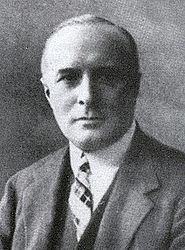Preceded by Stanislaw Patek Political party nonpartisan Religion Roman Catholicism Role Polish Politician Children Eustachy Sapieha | Nationality Polish Occupation Politician Name Eustachy Sapieha Succeeded by Jan Dabski | |
 | ||
Similar People Marian Januszajtis‑Zegota, Jedrzej Moraczewski, Jozef Pilsudski | ||
Eustachy Kajetan Sapieha (2 August 1881 – 20 February 1963) was a Polish nobleman, prince of the Sapieha family, politician, Polish Minister of Foreign Affairs, and deputy to the Polish parliament (Sejm).
In 1900–04, he studied forestry in Zurich and earned a degree as an engineer. A conservative activist from Kresy, he worked with the Regency Council and Jozef Pilsudski during the First World War. In 1917 he unsuccessfully negotiated with the Polish National Committee. Afterwards, disappointed with Pilsudski's leftist policies, he was an organizer of the failed 1919 coup d'etat; despite that, he subsequently worked with Pilsudski and supported him. On 16 June 1919, Sapieha was delegated as the ambassador of Poland to the United Kingdom. On 4 June 1920 he signed, as a representative of Polish diplomacy, the Treaty of Trianon together with Erazm Piltz.
During the Polish-Soviet War, he served in the cavalry. Afterwards, in 1920, he was chosen by Prime Minister Wladyslaw Grabski to head the Ministry of Foreign Affairs. Although he successfully negotiated several agreements with Western powers, his negotiations over federation with Lithuania failed and, faced with criticism from the National Democrats, in 1921 he resigned his post.
In 1928–29 he was a Sejm deputy from the Non-partisan Bloc for Cooperation with the Government. After the Soviet invasion of Poland in 1939 he was arrested by the Soviets and imprisoned in the Lubyanka prison. After the Sikorski-Mayski Agreement, he joined Anders' Army. In 1941 he left to Kenya. After the war he did not return to then-communist Poland, and stayed in Nairobi.
In 1956 he was awarded the Order of the White Eagle by the Polish government in exile.
